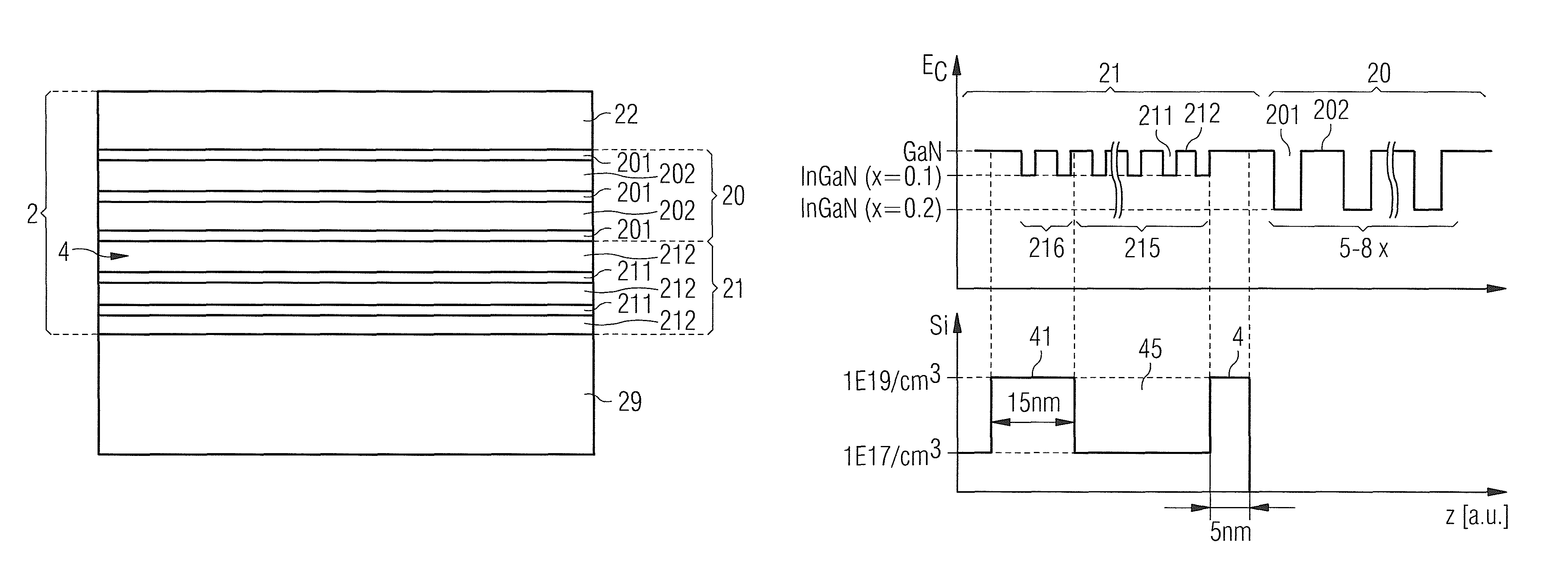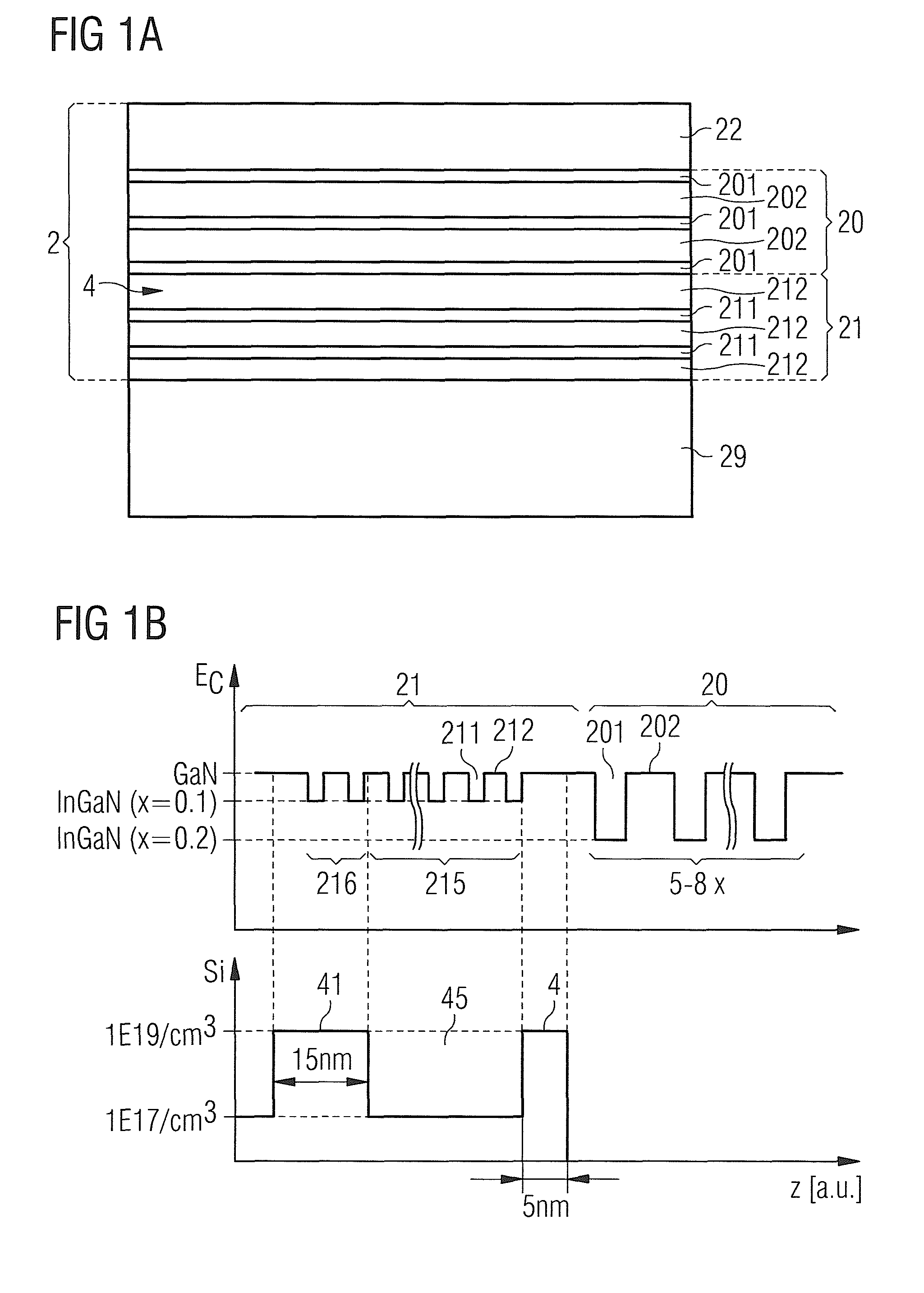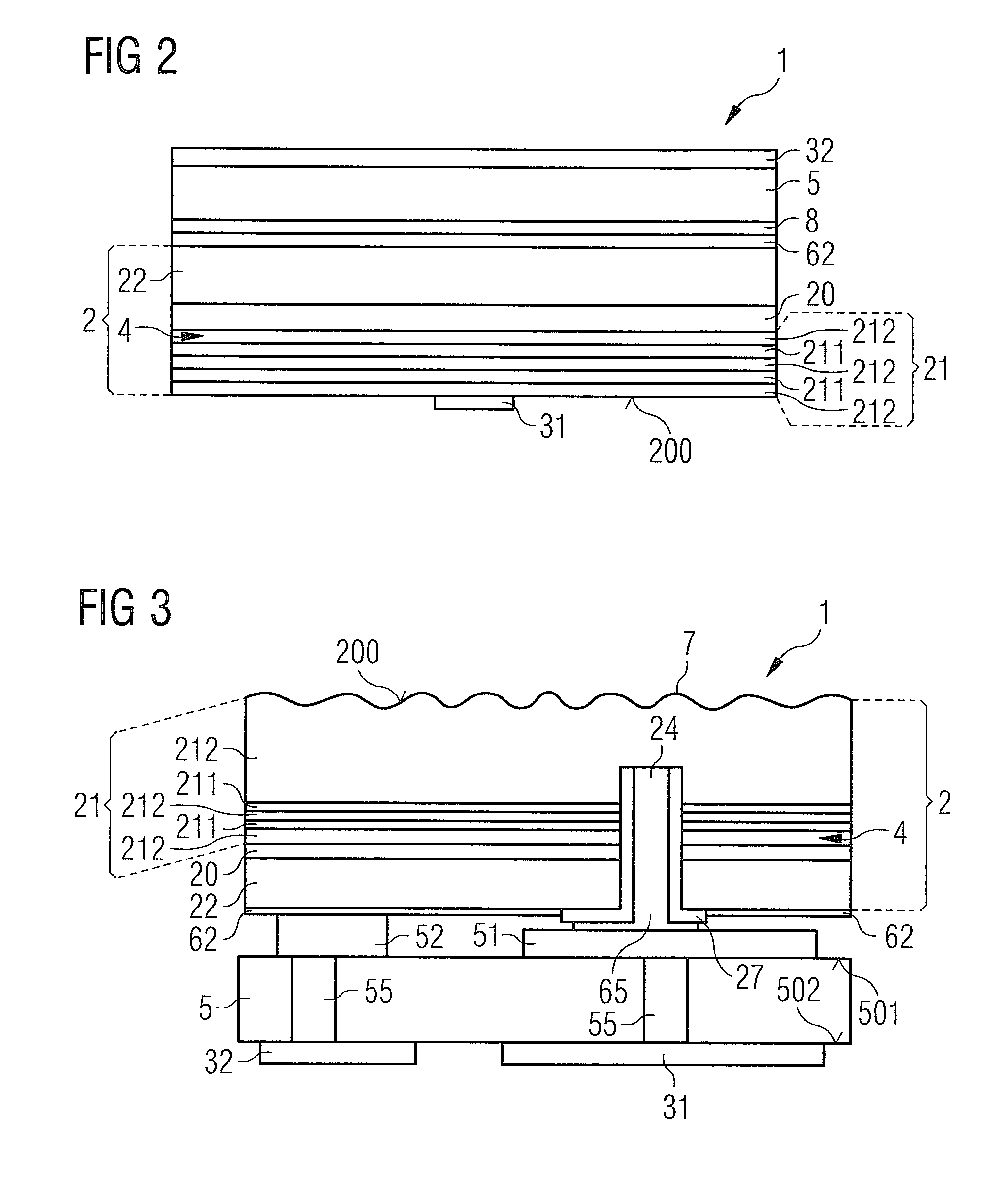Light-emitting semiconductor chip
a semiconductor chip and light-emitting technology, applied in semiconductor/solid-state device manufacturing, semiconductor devices, electrical apparatus, etc., can solve the problems of often not efficiently injected charge carriers into quantum wells, and achieve the effect of improving the behaviour of semiconductor chips
- Summary
- Abstract
- Description
- Claims
- Application Information
AI Technical Summary
Benefits of technology
Problems solved by technology
Method used
Image
Examples
Embodiment Construction
[0049]A first exemplary embodiment of a semiconductor body for a semiconductor chip is illustrated schematically in sectional view in FIG. 1A. The semiconductor body 2 comprises a semiconductor layer sequence which forms the semiconductor body. The semiconductor layer sequence comprises an active region 20 intended for generating radiation, which is arranged between an n-conductive multilayer structure 21 and a p-conductive semiconductor layer 22. The semiconductor layer sequence of the semiconductor body is preferably deposited epitaxially, in particular by MBE or MOCVD, on a growth substrate 29. Examples of materials suitable as a growth substrate for a semiconductor body based on a nitride compound semiconductor material are sapphire, silicon carbide, silicon or gallium nitride. A buffer layer may be formed between the n-conductive multilayer structure 21 and the growth substrate, which buffer layer may in particular be provided to enhance crystal quality (not shown explicitly).
[...
PUM
 Login to View More
Login to View More Abstract
Description
Claims
Application Information
 Login to View More
Login to View More - R&D
- Intellectual Property
- Life Sciences
- Materials
- Tech Scout
- Unparalleled Data Quality
- Higher Quality Content
- 60% Fewer Hallucinations
Browse by: Latest US Patents, China's latest patents, Technical Efficacy Thesaurus, Application Domain, Technology Topic, Popular Technical Reports.
© 2025 PatSnap. All rights reserved.Legal|Privacy policy|Modern Slavery Act Transparency Statement|Sitemap|About US| Contact US: help@patsnap.com



